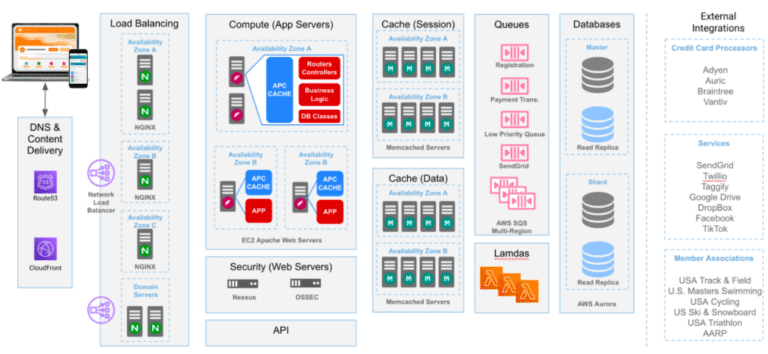We just did our annual renewal of servers on Amazon AWS. Each year, we upgrade and adjust the server types to take advantage of new chip and server advances. In addition, we added more automated scaling to our systems, and more reserve horsepower as our traffic continues to grow and to help with any outage issues in parts of our redundant system. You can read our more expansive 2022 Availability and Infrastructure Report here.
New Server Types
We upgraded a number of our servers (we run over 50 servers and a number of AWS services like Lambda, SQS, SES, SNS, S3, Cloudfront, CloudWatch, Route 53, etc.). There were two areas where we took advantage of new technology. First, were new Graviton based servers – the new higher performance and lower cost servers that AWS has rolled out, especially in our Database tier.
The second major change was moving to the newer m6i that are designed for memory intensive applications on our web server tier. This had the advantage of doubling our total memory at the web server tier.
In addition we went from 4 servers at a “4XL” size to 8 servers at a “2XL” size. This has the benefit of distributing the load during peak usage times, as well as increasing availability if issues happen (for example an AWS Availability Zone went offline a couple of years ago and took out many cloud services like Ticketmaster, Netflix, Delta and a couple of competitive registration providers while our services survived because of our distributed model).
Auto-Scaling
Perhaps one of the biggest advancements we have made over the past 6 months of infrastructure improvements is improving our auto-scaling. We now watch for either CPU or memory thresholds being broken across a minimum of 2 servers to then automatically start up new servers. We also increased the number of reserve servers to 8, enabling us to double capacity in about 5 minutes automatically with no manual intervention. Fortunately, we have not needed it since we rolled it out (but it was tested!).
We also updated our console that allows us to control servers in a more intuitive manner than the AWS Console. It allows us to reboot, shutdown, remove and add to to our load balancers any of the running web servers as shown below. It also allows us to manually add some or all of the 8 reserve servers very quickly, as well as add any number of servers with a bit more of a delay for them to be configured in the background before coming online.

Summary
We have come a long way since 2010 when we had a single server at GoDaddy. We are thankful to our many customers who have helped us grow to the point where we can build the best technology platform in the endurance industry. We will keep working hard and improving for you all.
